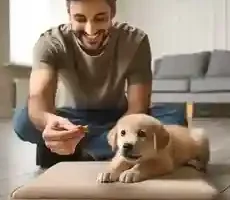How to stop leash pulling in 5 minutes – Walking your dog should be fun, not a battle! But what if your furry friend always pulls on the leash, making walks less enjoyable? Many dog owners face this challenge. How do you stop leash pulling in 5 minutes? You can teach your dog to walk nicely beside you with the right steps and patience.
This article will show you how to stop leash pulling in 5 minutes daily using simple methods like the “Red Light, Green Light” and the “Turn Around” techniques. Plus, we’ll share tips on making training fun for your dog and how to keep their attention on you. Let’s make walking with your dog a joy, not a chore!
How to Stop Leash Pulling in 5 Minutes
Here’s a condensed guide to get you began on improving leash manners swiftly.
Understanding Your Dog’s Perspective
Your dog loves walking because it’s a chance to be with you and have fun outside. To help them learn not to pull, it’s important to see things from their point of view.
Why Do Dogs Pull?
Dogs get excited about the world around them. There are so many things to smell, see, and discover! Some reasons include:
- Excitement: They can’t wait to see what’s around the corner!
- Instinct: Some dogs have a natural urge to chase things.
- Learning: They might not know that pulling isn’t okay.
- Attention: They pull because it gets your attention, even if it could be better.
Keeping Training Consistent
you must be clear about what you want. They always do the same thing every time they pull. This helps your dog understand and learn faster.
Patience and Understanding
Learning to walk nicely on a leash takes time. Your dog wants to make you happy but might wait to get it. Be patient and keep trying.
Getting Ready for Leash Training
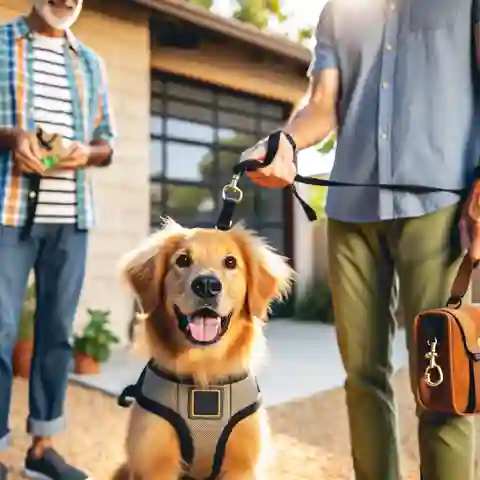
Before teaching your dog to enjoy walks without pulling, it’s like getting ready for a fun adventure together. You need some gear, tasty snacks, and a happy mindset. Here’s how you can get all set to teach your dog to walk nicely by your side.
Pick the Right Gear
- Leash and Collar: Grab a comfy collar that fits just right and a strong leash about as long as a big jump rope. This gives your dog room to explore but not too much that they start pulling. Skip the stretchy leashes for now—they can actually make pulling seem like a fun game to your dog.
- Harness: If your dog really loves to pull, a special harness can help. It’s made to kindly remind your dog to stay close without pulling.
- Treat Bag: Have a little pouch filled with snacks. This way, you can quickly give your dog a treat for being a good walker.
Choose Yummy Snacks
Snacks help your dog learn that walking nicely is awesome. Pick small, soft snacks that your dog goes crazy for. They should be quick to eat so your dog doesn’t forget why they got them in the first place. Mixing up the snacks keeps things exciting.
Set Small Goals
Learning to walk nicely is a big job. Remember, it’s okay if it takes a little time. Small wins are still wins. Cheer for the little steps your dog makes towards being a great walking buddy.
Make Everything Happy and Fun
- Pick a Quiet Spot: Start somewhere calm so your dog can listen to you without too many distractions. Early in the morning or later in the day can be perfect.
- Stay Happy and Relaxed: Dogs can tell how you’re feeling. If you’re stressed, your dog might feel stressed too. Keep things light and fun.
- Think and Plan Ahead: Know what you want to work on before you start. Be ready to celebrate when your dog does well.
- Check Your Dog’s Ready: Make sure your dog has gone to the bathroom and is feeling good before you start training.
Know What Your Dog Likes
Every dog is special. Some might do anything for a tiny piece of chicken, while others might want nothing more than a happy “good dog!” Find out what makes your dog’s tail wag and use that to help them learn.
Getting ready for leash training is about more than just grabbing a leash. It’s about setting up for a fun, rewarding time with your dog.
The Red Light, Green Light Method
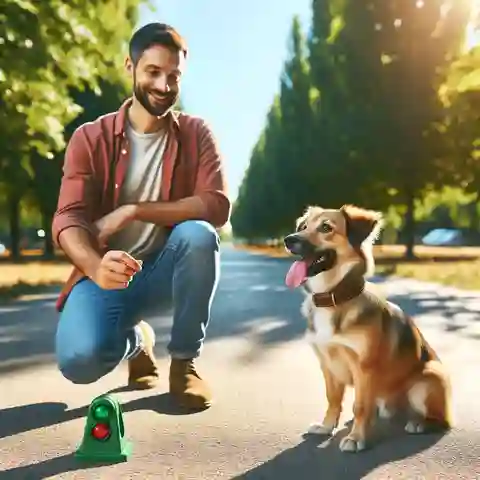
The Red Light, Green Light method is a simple yet effective technique to teach your dog to stop pulling on the leash. It’s based on clear communication and positive reinforcement. Here’s a deeper look into how it works and how you can make it successful for your dog.
Step-by-Step Guide
- Start Walking: Just walk like you always do. Make sure the leash isn’t too tight or too loose.
- Red Light: If your dog starts pulling, stop! Stand still. This is the “red light.” It shows your dog that pulling won’t work.
- Wait: Wait for your dog to stop pulling and look at you. Once the leash is loose, you’re ready for the next step.
- Green Light: Now you can start walking again. This is the “green light.” It tells your dog that staying close means you keep moving.
- Treat Time: If your dog walks nicely next to you, give them a treat or say something nice. This lets them know they’re doing great!
Tips for Success
- Be the Same: Always stop when they pull. This helps your dog learn faster.
- Talk to Your Dog: Use words like “stop” for red light and “let’s go” for green light. This helps them understand what you want.
- Be Patient: Some dogs learn fast, and some take a bit more time. Keep trying and stay calm.
- Start Simple: Begin where it’s quiet and there aren’t many distractions. As your dog gets better, you can try busier places.
- Keep It Short: Dogs get bored just like us. Short games are more fun and help them learn.
The Turn Around Technique
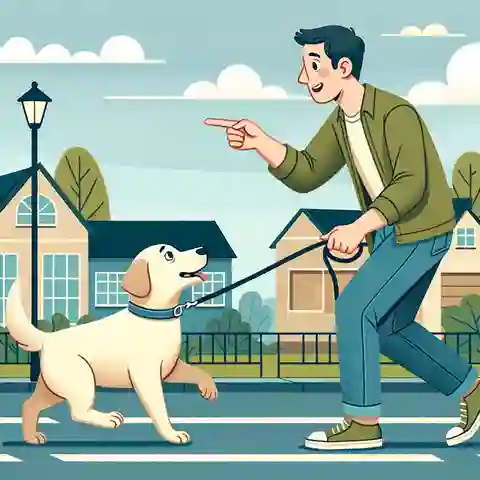
The Turn Around Technique is another effective training method to discourage leash pulling. Here’s how to implement this technique and ensure its effectiveness.
Step-by-Step Guide
- Start Your Walk: Let’s go for a walk, but keep a little slack in the leash.
- Turn Around: If your dog pulls, turn and walk the other way. No need to talk or pull back. Just dance your way around!
- Good Job Treats: When your dog follows you without pulling, tell them they’re doing great and give them a treat.
- Repeat if Needed: If they start pulling again, just turn around again. They’ll start to get the idea.
- Consistency: Do the same thing every time they pull. This helps them learn what you expect.
Tips for Success
- Stay Happy: Keep your cool. If you’re happy and relaxed, your dog will be too.
- Use Signals: Say something like “this way” when you turn. It’ll help your dog understand better over time.
- Up the Challenge: Start in easy, quiet places. As your dog gets the hang of it, try places with more going on.
- Short and Sweet: Remember, short games keep their attention better.
- Practice Makes Perfect: The more you play these games during walks, the better your dog will get at walking nicely.
Making Training Fun
Making training fun is crucial for keeping your dog engaged and eager to learn. When training feels like play, your dog is more likely to participate willingly and retain what they learn. Here are some strategies.
Use High-Value Treats
- Variety is Key: Rotate between different treats to keep things exciting. Find out what your dog loves the most—cheese, chicken, or perhaps a special dog treat—and use these as rewards during training.
- Timing Matters: Give treats immediately after your dog performs the desired behavior. This helps them make the connection between the behavior and the reward.
Incorporate Play
- Use Toys as Rewards: If your dog is more motivated by toys than treats, use their favorite toy as a reward. A quick game of tug-of-war or fetch can be just as effective as treats.
- Training as a Game: Turn training exercises into games. For example, you can make a game out of the “come” command by running away from your dog and rewarding them when they catch up to you.
Keep Sessions Short and Sweet
- Attention Spans: Dogs, especially puppies, have short attention spans. Keep training sessions brief (5-10 minutes) to ensure your dog doesn’t lose interest.
- Multiple Short Sessions: Rather than one long session, opt for multiple short sessions spread throughout the day. This helps keep your dog excited about training.
Offer Verbal Praise and Physical Affection
- Verbal Praise: Use an enthusiastic tone to praise your dog. Words like “good job” or “well done” can make a big difference in how your dog perceives the training session.
- Physical Affection: Don’t forget about pets, cuddles, and belly rubs. Many dogs find physical affection just as rewarding as treats.
Create a Positive Environment
- Avoid Negative Reinforcement: Training should never involve punishment. Instead, focus on rewarding the behaviors you want to encourage.
- Patience and Consistency: Always approach training with patience. If you’re feeling frustrated, take a break and try again later.
- End on a High Note: Finish each training session with an easy command your dog knows well. Reward them and end with some playtime. This leaves a positive lasting impression associated with training.
Engage Their Mind
- New Tricks: Keep your dog mentally stimulated by teaching new tricks. This not only reinforces their training but also keeps their mind sharp.
- Obstacle Courses: Create simple obstacle courses in your backyard or living room. This can be a fun way to practice commands and keep your dog physically active.
Mistakes to Avoid
Here are some key mistakes to avoid:
Don’t Rely Solely on Physical Strength
- Avoid Pulling Back: Pulling back on the leash when your dog pulls only creates a tug-of-war situation. This can increase their pulling behavior instead of decreasing it.
- Use Strategy, Not Force: Focus on training techniques that guide your dog to the desired behavior through positive reinforcement rather than trying to overpower them.
Don’t Skip the Warm-Up
- Start with a Calm State: Begin your training or walks when your dog is in a relatively calm state. If they’re overly excited or energetic, spend some time playing or engaging in activities to burn off some energy first.
Avoid Negative Reinforcement
- No Yelling or Punishment: Using negative reinforcement, like yelling or punishment, can cause fear, anxiety, and confusion.
- Focus on Positive Reinforcement: Reinforce what you want your dog to do, not what you don’t want. Reward them for walking nicely rather than scolding them for pulling.
Don’t Be Inconsistent
- Consistency is Crucial: Being inconsistent with commands, rewards, or corrections confuses your dog. Ensure everyone in your household is on the same page with training methods and commands.
- Regular Practice: Training isn’t a one-time event. Regular, consistent practice is necessary for your dog to learn and maintain good leash manners.
Don’t Use the Wrong Equipment
- Choose the Right Leash and Collar: Using the wrong type of leash or collar can contribute to pulling problems or even harm your dog. Research and possibly consult a professional to find the best options for your dog’s size, breed, and temperament.
Avoid Training When Frustrated
- Stay Positive: If you’re feeling frustrated or impatient, it’s not the right time for training. Dogs can pick up on your emotions, which can affect their learning. Take a break and try again later when you’re both in a better mood.
Don’t Forget to Reward Small Progress
- Celebrate Small Wins: Training is a process, and progress may be gradual. Acknowledge and reward even small improvements in your dog’s behavior to encourage them to keep learning.
Avoid Overloading Your Dog
- Keep Training Sessions Short: Long training sessions can overwhelm your dog, leading to a loss of focus and interest. Short, frequent sessions are more effective.
Keeping Attention
Keeping your dog’s attention during leash training is crucial for success. Here’s how to ensure your dog stays focused on you during training sessions.
Use High-Value Treats
- Irresistible Rewards: Keep your dog’s attention by using high-value treats they can’t resist. These should be treats that are more appealing than the distractions around them.
Engage Their Senses
- Visual Cues: Use toys or hand signals to catch their eye. Dogs are very responsive to visual cues, and these can be a powerful way to maintain their focus.
- Verbal Commands: Use a cheerful and enthusiastic voice to give commands.
Short, Dynamic Sessions
- Keep It Short: Short sessions help prevent your dog from losing interest. Aim for 5 to 10 minutes, especially for young or easily distracted dogs.
- Change It Up: Vary the activities and commands within each session to keep things interesting for your dog.
Reward Attention
- Immediate Praise: The moment your dog looks at you or pays attention, reward them.
Practice in Different Settings
- Vary Environments: Practice in different environments to help your dog learn to focus on you no matter where you are. Start in low-distraction areas and gradually move to busier ones.
Practicing Every Day
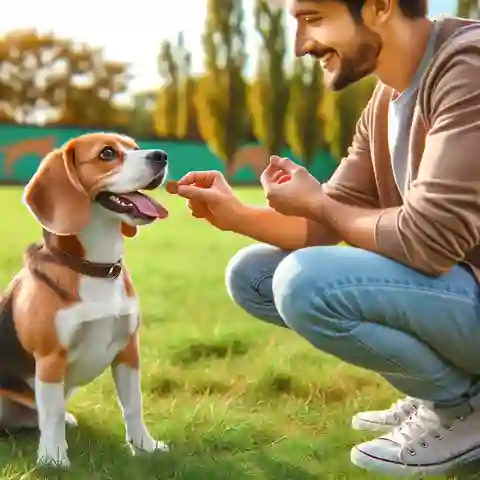
Consistent daily practice is key to reinforcing good leash manners and ensuring that your dog’s training sticks. Here’s how to integrate practice into your daily routine effectively.
Incorporate Training into Daily Walks
- Use Every Walk: Every walk is an opportunity for training. Incorporate short training sessions into your regular walks to reinforce good behavior.
Set a Routine
- Consistency: Dogs thrive on routine. Try to practice at the same time each day to create a habit. This predictability helps your dog understand that training is a regular part of their day.
Use Real-Life Rewards
- Beyond Treats: Use real-life rewards such as sniffing a tree, greeting a friendly dog, or playing in the park as rewards for good behavior during walks. This teaches your dog that listening to you leads to enjoyable experiences.
Track Progress
- Celebrate Improvements: Keep track of your dog’s progress. Celebrating small milestones can motivate both of you to keep going.
Involve the Whole Family
- Consistent Commands: Make sure everyone in the household uses the same commands and rewards. This consistency helps reinforce learning and prevents confusion.
Stay Positive and Patient
- Positive Reinforcement: Always use positive reinforcement. Patience and positivity make training a positive experience for your dog, encouraging them to look forward to it.
Make It Fun
- End on a High Note: Finish each training session with a fun game or a favorite treat. This leaves your dog with positive feelings about training and looking forward to the next session.
By focusing on keeping your dog’s attention and practicing every day, you’ll build a strong foundation for good leash behavior.
Safety Tips
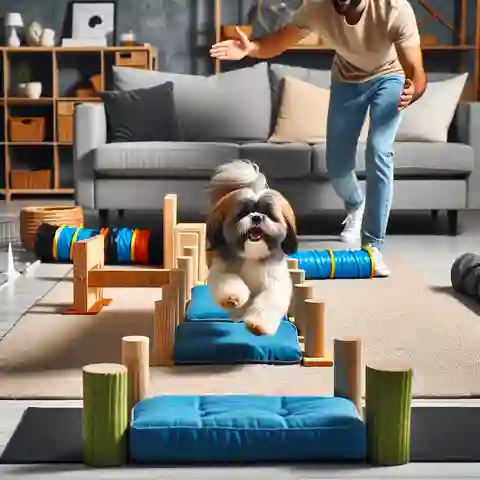
Keeping everyone safe is super important when you’re teaching your dog how to walk nicely on a leash. Here’s how you can make sure training time is safe and fun for you, your dog, and everyone around you.
Pick the Right Walking Gear
- The Perfect Match: Make sure your dog has a strong leash and a comfy collar or harness. This keeps them safe and snug.
- Be Seen: If it’s getting dark or it’s early in the morning, wear something bright or shiny. You can even find glowing collars for your dog!
Know What’s Around You
- Look Around: Always check out what’s happening around you. Watch out for other animals, cars, and anything that might scare or hurt your dog.
- Find a Good Spot: Choose a quiet place to practice walking. It’s easier to learn when there aren’t a lot of distractions or dangers.
Understand Your Dog’s Needs
- Don’t Overdo It: Training is supposed to be fun, not tiring or stressful. Make sure your dog isn’t getting too tired or hot, especially on really sunny or really cold days.
Walking Nicely Together
- Be Polite: Keep your dog close to you when there are other people or dogs around. This is polite and keeps everyone comfortable.
- Clean Up: Always have bags with you to clean up after your dog. It keeps places nice for everyone.
By following these safety tips, you and your dog can have a great time training together, and everyone stays happy and safe. Remember, taking care of each other is what makes training work best. Let’s keep training safe and fun!
Getting More Help
Here are ways to get the assistance you need.
Consult a Professional Dog Trainer
- Expert Guidance: A professional dog trainer can provide personalized advice and strategies tailored to your dog’s needs. Look for trainers who use positive reinforcement methods.
- Training Classes: Group classes can be a great way to learn alongside other dog owners. They also offer the added benefit of socializing your dog.
Seek Advice from a Veterinarian
- Health Check: Sometimes, a dog’s pulling behavior can be linked to an underlying health issue. A veterinarian can help identify any medical problems that might be affecting your dog’s behavior.
- Behavioral Specialists: Some vets have special training in animal behavior or can refer you to a specialist who does.
Utilize Online Resources
- Training Videos and Websites: There are many reputable online resources that offer free training advice, including step-by-step videos that can be very helpful.
- Forums and Social Media Groups: Joining online communities dedicated to dog training can provide support and advice from fellow dog owners who have faced similar challenges.
Books and Guides
- Educational Materials: There are numerous books and guides on dog training that can offer insights and techniques for improving leash manners.
By combining these resources, you’ll be well-equipped to address leash pulling effectively.
Conclusion
Congratulations! You’re now equipped with effective strategies to make walks with your dog enjoyable without the pulling and tugging. Remember, every dog can learn to walk nicely with patience and consistent practice. Use the “Red Light, Green Light”, and the “Turn Around” techniques to teach your dog the joys of walking calmly.
Keep training sessions fun and rewarding, and remember to practice safety first. If you ever need more help, plenty of advice and support is available from professional trainers and online resources. Walking with your dog should be a special time for both of you, so grab that leash, and let’s get started on a happier, pull-free walking adventure!

